On the Use of Hybrid Excited Synchronous Machines (HESM) in Transportation Electrification
Introduction
The current worldwide trend of the transition to decarbonized energy sources and usages should be both regarded at the systems and components levels. At these, both levels, the energy efficiency aspect, and the usage of available cheap (economically and having the lower ecological impact) materials should be given high attention.
In this context, electricity is the best-suited vector of energy to meet the challenges of our societies. It allows an increase in energy efficiency and a reduction in polluting emissions.
Electric machines are one of the most important, if not the most important, components of electrical energy production and conversion process. They are present upstream and downstream from this process. Upstream, electric generators allow converting mechanical energy into electrical energy. They can be found in power plants, wind turbines, motor vehicles, and aircraft, etc. Downstream, the motors and electric actuators allow converting electrical energy into mechanical work. They can be found in our houses (washing machines, home automation equipment), in cars, in trains, in airplanes, where they are replacing more and more the hydraulic and pneumatic actuators, and production chains in factories, etc.
Within the different electric machines and actuators technologies, PM machines, and more particularly rare earth PM machines, are these which can reach higher performance in terms of torque and power densities. Nevertheless, the use of PM material is accompanied by some drawbacks as the availability and ecological cost of the rare earth materials, and the reduced flexibility of PM electric machines designs. Indeed, it is quite difficult to operate efficiently over a large operating range.
Hybrid excited synchronous machines (HESM) help overcome these drawbacks and constitute therefore a very interesting alternative to explore [1]. In generating mode, hybrid excitation machines connected to a passive rectifier constitute an interesting alternative to PM alternators associated to an active power converter. In motoring mode, the hybrid excitation principle allows an easier high-speed operation while the use of PMs helps increase energy efficiency. The hybrid excitation principle can also be used to reduce PM volumes and save material cost.
Fundamental Principle of Hybrid Excited Synchronous Machines
Hybrid excited synchronous machines are those which use two excitation flux sources: permanent magnets (PM) as well as field coil excitation source. The goal behind the association of both sources is to combine the advantages of both PM machines and wound field synchronous machines. The good performances of hybrid excitation machines, such as improved flux weakening capability and energy efficiency, is stimulating increased interest in their study. The hybrid excitation principle allows a wide variety of structures to be realized. Many criteria can then be chosen for the classification of HESMs. Classical criteria used for classification of other types of electric machines can be used; as an example:
1) Radial field and axial field machines,
2) 2D and 3D structures machines.
Figure 1(a) shows an example of an axial flux HESM [2] and Figs. 1(b) and 1(c) show examples of HESMs with 2D and 3D structures respectively [1], [3]. 3D structures are in general more difficult to analyze and manufacture. Regarding the presence of two excitation flux sources in HESM, two criteria seem more specific for classification of these machines:
1) by analogy with electric circuits, the first criterion concerns the way the two excitation flux sources are combined: series and parallel double excitation machines [1], [4];
2) the second criterion concerns the localization of the excitation flux sources in the machine: both sources in the stator, both sources in the rotor and mixed localizations. By mixed localization, it is meant that one source (excitation coils or permanent magnets) is located in the rotor or the stator and the other source in the stator or the rotor respectively. Having excitation coils in the stator is favored to avoid sliding contacts.
The first criterion is more linked to the flux control capability of double excitation machines. Since excitation flux created by excitation coils should pass through the permanent magnets, which have low relative permeability (μr ≈ 1), in series double excitation machines, the flux control capability of the series double excitation structures should be less efficient than that of the parallel double excitation structures [5]. The second criterion is more linked to ease of manufacture and operation of HESMs. Indeed, having both excitation sources (excitation coils and permanent magnets) located in the stator presents some advantages from manufacturing and operating point of views because they are fixed: it is far more easier to cool fixed parts; the presence of flux sources in the stator implies a completely passive rotor which means no need of a containment system and an improved high speed operating capability.
 |
 |
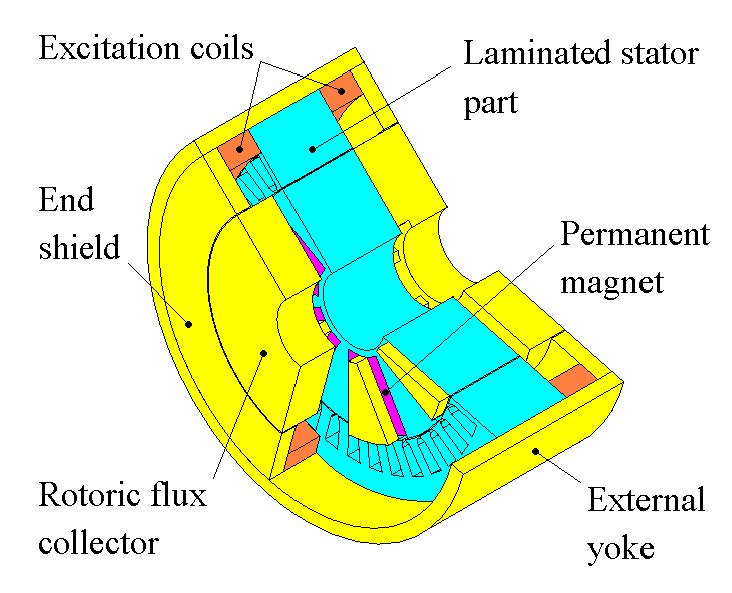 |
| (a) | (b) | (c) |
Fig. 1. Different hybrid excited synchronous structures.
On the Use of HESM in Transportation Applications
In order to illustrate the advantages which could be gained by a larger utilization of HESMs in transportation electrification, two typical applications are discussed in this section: electric automotive vehicles and aircraft electric power generation.
For electric automotive applications, it has been demonstrated that the additional degree of freedom, (hybridization ratio α) offered by the hybrid excitation principle, in the design of HESMs, could be advantageously exploited in order to increase the energy efficiency of the drive train, and therefore increase the vehicle's autonomy [1]. Fig. 2 illustrates how the adjustment of the hybridization ratio could help increase the power efficiency in the most frequently solicited operating points. The hybridization ratio reflects the contribution of the PMs excitation flux to the total maximum excitation flux (PMs excitation flux + wound field excitation flux).
 |
 |
| (a) α = 1 | (b) α = 0.72 |
Fig. 2. Efficiency maps in the "torque/speed" plane. (a) α = 1. (b) α = 0.72.
The second example concerns the use of a flux switching HESM for aircrafts safe DC power generation [6]. In this solution, the hybrid excitation allows controlling the DC output voltage without requiring a controllable AC/DC converter. The flux control capability allows the use of the more reliable diode bridge rectifier and easier operation over a wide-speed-range. Fig. 3 shows a prototype built for that purpose.
Fig. 3. Flux switching HESM (stator housing, PMs and armature windings are not present in this photo).
Conclusions and perspectives
It is obvious regarding the growing penetration of electricity in transportation applications, where conventional combustion engines are still dominant, that the use of electric machines with additional degrees of freedom, such as HESMs, will also experience an important growth. Indeed, considering the number of pieces required for the construction of even the simplest combustion engine, the construction of even the much complex electric machine requires much less operations and simpler production lines.
Although the illustrating examples presented in the previous section are from an academic research laboratory, it is not possible to conclude this contribution without citing an industrial application of HESMs in transportation electrification: the stop-start system "i-StARS starter-alternator" [7].
References
[1] Y. Amara, L. Vido, M. Gabsi, E. Haong, A. H. Ben Ahmed, and M. Lécrivain, “Hybrid excitation synchronous machines: Energy-efficient solution for vehicles propulsion,” IEEE Trans. Veh. Technol., vol. 58, no. 5, pp. 2137-2149, Jun. 2009.
[2] J. S. Hsu, “Direct control of air-gap flux in permanent-magnet machines,” IEEE Trans. Energy Convers., vol. 15, no. 4, pp. 361–365, Dec. 2000.
[3] J. T. Chan, Z. Q. Zhu, S. Iwasaki, and R. Deodhar, “A novel hybrid excited flux-switching brushless AC machine for EV/HEV applications,” IEEE Trans. Veh. Technol., vol. 60, no. 4, pp. 1365-1373, May 2011.
[4] Y. Amara, J. Lucidarme, M. Gabsi, M. Lécrivain, A. H. Ben Ahmed, and A. D. Akémakou, “A new topology of hybrid excitation syn-chronous machine,” IEEE Trans. Ind. Appl., vol. 37, no. 5, pp. 1273–1281, Sep./Oct. 2001.
[5] Y. Amara, S. Hlioui, R. Belfkira, G. Barakat, and M. Gabsi, “Comparison of open circuit flux control capability of a series double excitation machine and a parallel double excitation machine,” IEEE Trans. Veh. Technol., vol. 60, no. 9, pp. 4194-4207, Nov. 2011.
[6] A. Nasr, S. Hlioui, M. Gabsi, M. Mairie, and D. Lalevee, “Design optimization of a hybrid-excited flux-switching machine for aircraft-safe DC power generation using a diode bridge rectifier,” IEEE Trans. Ind. Electron., vol. 64, no. 12, pp. 9896–9904, Dec. 2017
[7] https://www.valeo.com/en/systems-stop-start/
Authors
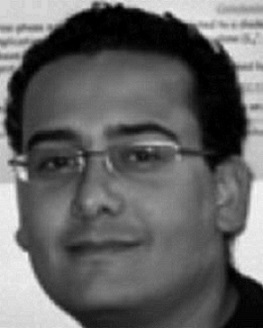 |
Sami Hlioui received the electromechanical engineer diploma degree from the National School of Engineering of Sfax, Sfax, Tunisia, in 2004, the M.Sc. degree in electrical engineering from the Ecole Normale Supérieure de Cachan, Cachan, France, in 2005, and the Ph.D. degree in electrical power engineering from the University of Technology of Belfort-Montbeliard, Belfort, France, in 2008. He is a Lecturer with the Conservatoire National des Arts et Métiers, Paris, France, and a Researcher with the Laboratory of Systems and Applications of Information and Energy Technologies, Ecole Normale Supérieure de Cachan. His main research interests include the multidisciplinary modeling of electromagnetic actuators and the optimal design of these actuators for embedded applications. |
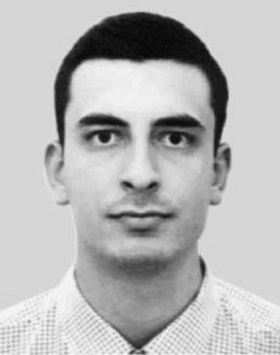 |
Yacine Amara (S’00–M’03–SM’18) was born in Algiers, Algeria, in 1975. He received the Ingénieur d’Etat degree from the Ecole Nationale Polytechnique, Algiers, in 1997 and the Ph.D. degree in electrical and electronic engineering from the University of Paris South XI, Paris, France, in 2001. From 1998 to 2001, he worked toward the Ph.D. degree with the Laboratoire d’Electricité Signaux et Robotique (LESiR), Ecole Normale Supérieure de Cachan, Cachan, France. From 2003 to 2004, he was a Research Associate with the Department of Electronic and Electrical Engineering, University of Sheffield, Sheffield, U.K. From 2004 to 2007, he was a Lecturer with the Department of Electrical Engineering, Technical University of Belfort-Montbéliard, Belfort, France. Since 2008, he has been with the Groupe de Recherche en Electrotechnique et Automatique du Havre (GREAH), University of Le Havre, Le Havre, France, where he is currently a Full Professor. His research interests include the design, modeling, and control of rotating and linear permanent-magnet machines for automotive and renewable energies applications. |
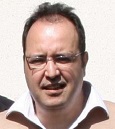 |
Hamid Ben Ahmed received the Ph.D. degree from the Paris 6 University in 1994 and HDR degree from the Paris 11 University in 2006. Since 1997, he is an Assistant Professor in the Mecatronique Department of Ecole Normale Supérieure de Cachan, Brittany Branch, France and the head of the research team "Energy Systems for Transportation and the Environment" of SATIE Laboratory. His research interests include the design, modeling and optimization of novel topologies of electromagnetic actuators and generators, and the optimization methodology of renewable energy systems. |
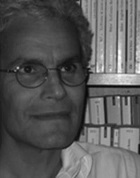 |
Mohamed Gabsi received the Ph.D. degree in electrical engineering from the University of Paris-VI, Paris, France, in 1987, and the HDR degree from the University of Paris-XI, Orsay, France, in 1999. Since 1990, he has been working with the electrical machines team SETE of the Laboratory of Systems and Applications of Information and Energy Technologies, Ecole Normale Supérieure de Cachan, Cachan, France, where he is currently a Full Professor. His research interests include switched reluctance motor, vibrations and acoustic noise, and permanent magnet machines. |
About the Newsletter
Editors-in-Chief

Jin-Woo Ahn
Co-Editor-in-Chief

Sheldon Williamson
Co-Editor-in-Chief
TEC Call for Articles 2023 - Advances in Charging Systems
The TEC eNewsletter is now being indexed by Google Scholar and peer-reviewed articles are being submitted to IEEE Xplore.
To submit an article click here.


